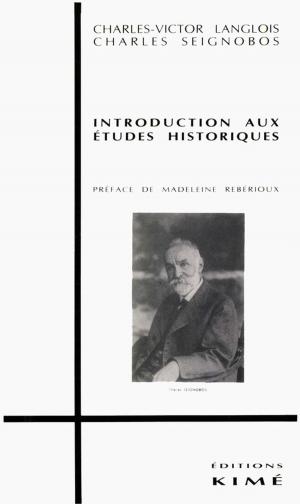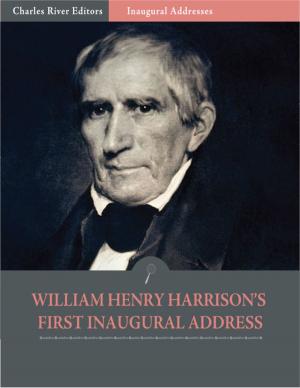Electrons and Holes Put to Work in the Semiconductor Chip
Nonfiction, Science & Nature, Technology, Engineering, History| Author: | John Plumb | ISBN: | 9780463096710 |
| Publisher: | John Plumb | Publication: | February 7, 2019 |
| Imprint: | Smashwords Edition | Language: | English |
| Author: | John Plumb |
| ISBN: | 9780463096710 |
| Publisher: | John Plumb |
| Publication: | February 7, 2019 |
| Imprint: | Smashwords Edition |
| Language: | English |
This book tells the story of the advent, study and development of electronics which began just before the beginning of the 20th century. It covers the more important inventions that resulted from discovery, enlightenment and innovation. Introduced are the inventors who claimed these advancements for themselves, for the teams with whom they worked and for the companies by whom they were employed. It begins with the application of a coherer, an insulator tube loosely filled with metal filings. Metal particles had been found to adhere together and to electrodes so as to conduct sufficient electric current to trigger a relay when connected to antenna receiving electromagnetic waves, waves of electric and magnetic forces in the air. Inventors Lodge and Marconi each found that telegraph messages could be generated across spark gaps, transmitted through the air as waves and made to sound in receivers having a coherer as a wave detector. A number of inventors claimed various methods for decohering the detectors, until self-restoring liquid detectors were invented by DeForest and by Fessenden to not only detect telegraph messages but also voice messages, i.e., radio broadcasts. DeForest and Fleming each invented receivers employing vacuum tube detectors that rectified electric current, i.e., allowed electric current in one direction only, and Armstrong introduced vacuum tube high-frequency generation and feedback.
Some crystalline material, neither conducting nor insulating, called semiconductor, was found to rectify electric current. It was used for that purpose in simple radio receivers by Pickard and by others and made to amplify in devices by Lilienfeld. These inventions inspired research in semiconductors and contacts to them. Conduction by both electrons and missing crystal electrons, holes, across contacts to semiconductor, made possible the point-contact transistor inventions of Brattain and of Bardeen at Bell Labs. Their manager Shockley developed a mathematical model and proposed the junction transistor employing junctions to and separated by a thin center layer of semiconductor of a type opposite to that of the other. At Texas Instruments Kilby constructed an electronic circuit in single semiconductor crystal, an integrated circuit, an IC. Hoerni, at Fairchild Semiconductor, developed a method of forming rectifiers and transistors on the surface of semiconductor, the planar method, making possible the design of a planar integrated circuit by Noyce and group at Fairchild. A planar transistor, the metal-oxide-semiconductor field-effect-transistor, MOSFET, was developed by Atalla and by others. The lowering of MOSFET turn-on voltage by Heiman, the complimentary MOSFET, CMOS, using the two semiconductor types together by Wanlass, semiconductor replacement for MOSFET metal gate by Faggin, an electrically-floating gate, and by Dennard a dynamic random-access-memory, DRAM, and further scaling down of transistor size are some of the inventions that led to the introduction of the microprocessor, which is the computer central processing unit, CPU, on one IC, on one chip, including, by the end of the century, the smart phone.
This implosion of electronics has been the reduction of the dimensions of transistor features from millimeters to a millionth of a millimeter, a nanopmeter: a million times size reduction in one century.
Patents are recognized, referenced and explained using numerous line drawings. A glossary is provided with definitions of terms specific to their applications in this bookl
This book tells the story of the advent, study and development of electronics which began just before the beginning of the 20th century. It covers the more important inventions that resulted from discovery, enlightenment and innovation. Introduced are the inventors who claimed these advancements for themselves, for the teams with whom they worked and for the companies by whom they were employed. It begins with the application of a coherer, an insulator tube loosely filled with metal filings. Metal particles had been found to adhere together and to electrodes so as to conduct sufficient electric current to trigger a relay when connected to antenna receiving electromagnetic waves, waves of electric and magnetic forces in the air. Inventors Lodge and Marconi each found that telegraph messages could be generated across spark gaps, transmitted through the air as waves and made to sound in receivers having a coherer as a wave detector. A number of inventors claimed various methods for decohering the detectors, until self-restoring liquid detectors were invented by DeForest and by Fessenden to not only detect telegraph messages but also voice messages, i.e., radio broadcasts. DeForest and Fleming each invented receivers employing vacuum tube detectors that rectified electric current, i.e., allowed electric current in one direction only, and Armstrong introduced vacuum tube high-frequency generation and feedback.
Some crystalline material, neither conducting nor insulating, called semiconductor, was found to rectify electric current. It was used for that purpose in simple radio receivers by Pickard and by others and made to amplify in devices by Lilienfeld. These inventions inspired research in semiconductors and contacts to them. Conduction by both electrons and missing crystal electrons, holes, across contacts to semiconductor, made possible the point-contact transistor inventions of Brattain and of Bardeen at Bell Labs. Their manager Shockley developed a mathematical model and proposed the junction transistor employing junctions to and separated by a thin center layer of semiconductor of a type opposite to that of the other. At Texas Instruments Kilby constructed an electronic circuit in single semiconductor crystal, an integrated circuit, an IC. Hoerni, at Fairchild Semiconductor, developed a method of forming rectifiers and transistors on the surface of semiconductor, the planar method, making possible the design of a planar integrated circuit by Noyce and group at Fairchild. A planar transistor, the metal-oxide-semiconductor field-effect-transistor, MOSFET, was developed by Atalla and by others. The lowering of MOSFET turn-on voltage by Heiman, the complimentary MOSFET, CMOS, using the two semiconductor types together by Wanlass, semiconductor replacement for MOSFET metal gate by Faggin, an electrically-floating gate, and by Dennard a dynamic random-access-memory, DRAM, and further scaling down of transistor size are some of the inventions that led to the introduction of the microprocessor, which is the computer central processing unit, CPU, on one IC, on one chip, including, by the end of the century, the smart phone.
This implosion of electronics has been the reduction of the dimensions of transistor features from millimeters to a millionth of a millimeter, a nanopmeter: a million times size reduction in one century.
Patents are recognized, referenced and explained using numerous line drawings. A glossary is provided with definitions of terms specific to their applications in this bookl















